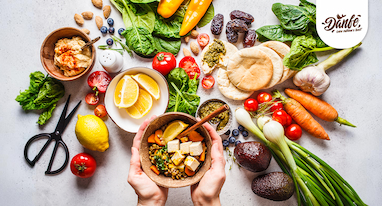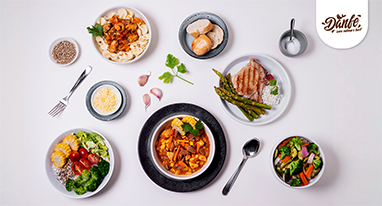Flour 101: Different Types, and Their Benefits
BY DANFE |
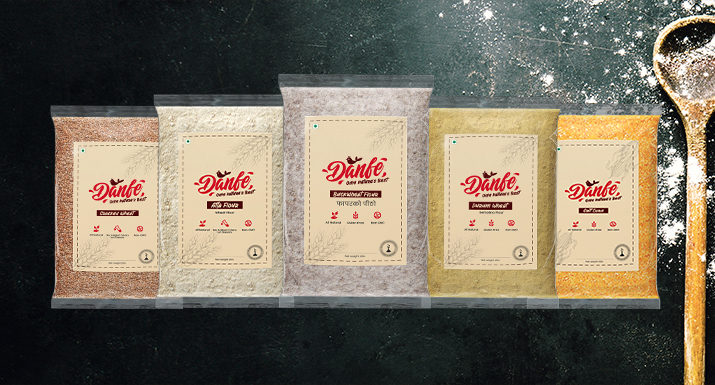
If you’re a cooking or a baking enthusiast or just simply love eating, then flour is a must-have ingredient in your kitchen. You’ve probably walked past a variety of flours in the baking aisle of your grocery store, only to end up adding all-purpose flour to your cart. And who can blame you? Having different types of flours in your pantry could seem like a waste unless you’re a baking or cooking aficionado.
Well, that ends now. We’re going to give you the low-down on the different types of flours, their uses, and benefits so you can “wow” your family and friends while enjoying nutritious, mouth-watering dishes.
Table of Contents:
- Atta Flour
- Buckwheat Flour
- Cracked Wheat Flour
- Durum Wheat Flour
- Grit Corn Flour
- Idli Rava Flour
- Maida Flour
- Rice Flour
- Sooji Flour
Atta Flour
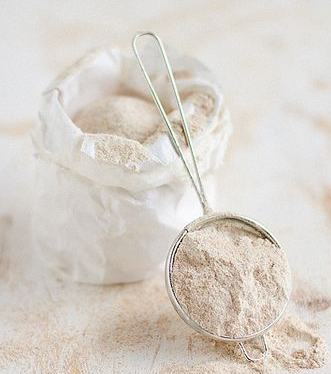
Atta Flour is whole wheat flour that is a staple in Indian households! This commonly-used flour is used to make many traditional Indian dishes such as flatbreads (roti), paratha, and thepla. Being a nutrient-rich flour, Atta is also used in place of white flour to make multigrain bread and pizza base.
Basically, this nutritious flour can be used for any recipe that calls for flour to make your dishes healthier. It is rich in essential vitamins, minerals like Vitamin B9, Vitamin A, magnesium, protein, and iron. These nutrients are known to provide energy, aid metabolism, strengthen bones, control blood sugar, and prevent anemia.
Buckwheat Flour
Buckwheat Flour is a diabetic-friendly and gluten-free flour that belongs to the pseudocereal family, similar to quinoa. It’s an extremely popular flour since it caters to a grain-free diet and can be used as the main ingredient to make anything from khichdi to pancakes.
Apart from being grain-free, its popularity can be credited to its nutrient content and rich, nutty flavor. Buckwheat flour is an excellent source of minerals, iron, calcium, vitamins, and powerful antioxidants that help fight against damage from free radicals, support heart health, and aid digestion. It’s also known to have a high folate and protein content which makes it a great ingredient for pregnant women and vegetarians.
Cracked Wheat Flour
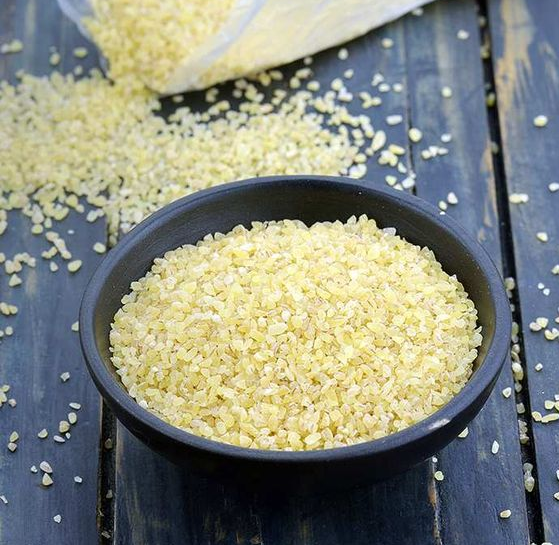
Cracked Wheat Flour is broken whole wheat kernels with a nutty flavor, a crunchy texture, and a whole lot of nutrients. This flour is great for making South Indian upma, burger patties, pastries, and khichdi. You can also simply add it to your morning oats, granola, or breakfast cereals for a healthy start.
Cracked Wheat Flour is packed with vitamins, minerals, and fiber that are known to improve digestive and gut health, aid weight loss, lower cholesterol, and control blood sugar levels. It’s a nutritious flour that is easy to cook, and extremely filling!
Durum Wheat Semolina Flour
A coarse flour made from durum wheat, Durum Wheat Semolina Flour is usually known as pasta flour – making it most popular in Italy. But it’s versatility extends beyond Italian cuisine – it is also excellent for making couscous, pastries, halva, and upma.
This mild, earthy-flavored flour is packed with proteins, fibers, and vitamins that are known to support heart health, aid digestion, boost immunity, regulate diabetes, and manage cholesterol. Its nutrient profile helps maintain a balanced diet that leaves you feeling full for a long period of time.
Grit Corn Flour
Grit Corn Flour is basically boiled cornmeal with a coarse texture. It’s a southern breakfast staple in the United States where it’s gone from being a breakfast item to a mouthwatering entree – the popular dish being Shrimp & Grits. In Indian cuisine, it’s used to make Rava Khichdi, Upma, and even Idlis.
This diabetic-friendly, gluten-free flour is an excellent source of antioxidants, iron, B vitamins, and minerals that are known to boost metabolism, prevent anemia, and improve vision. Not only is it nutritious, but it’s also easy to prepare – depending on the recipe, you can have simple, healthy, and tasty grits in 10-15 minutes!
Idli Rava Flour
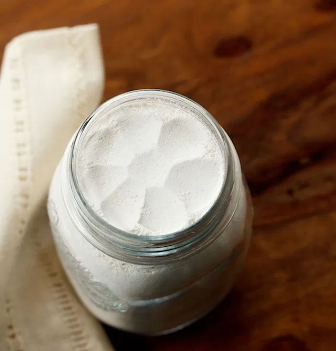
Idli Rava Flour is coarsely ground boiled rice that is a staple in South Indian households. It’s used to make the batter for delicious, soft idlis, rava upma, crispy dosas, and puttu (a traditional recipe normally made during Navratri).
In addition to making delicious comfort foods, Idli Rava flour is popular for its health benefits. It’s enriched with essential antioxidants, fiber, vitamins, and minerals that are known to prevent iron deficiency, provide energy, aid weight loss, and regulate diabetes.
Maida Flour
Maida, also known as all-purpose flour, is a star ingredient worldwide and needs no introduction. It’s made from wheat grains that are highly refined. Maida is used for making all-time favorite recipes like pancakes, noodles, burgers, and more.
Maida is especially popular in the United States where it’s used for baking, frying, and thickening purposes. And because of its versatility and popularity in recipes, Maida is extremely easy to find and available year-round.
Rice Flour
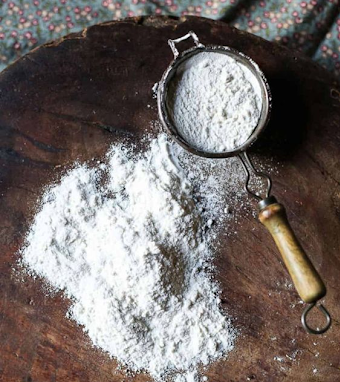
Rice Flour is essentially finely milled rice that is a staple in Southeast Asian, Japanese, and Indian households. It can be used to make savory and sweet dishes from pancakes and rotis to rice noodles and South Indian appams. It can also be used as a thickening agent for stews and soups.
This versatile flour is a gluten-free, low-fat, low-cholesterol flour that is great for all types of diets. It is packed with fibers, minerals, calcium, vitamins, and minerals that are known to help with weight loss, regulate blood sugar levels and digestion, and improve liver function.
Sooji Flour
Sooji Flour, also known as Rava Flour in South India is a popular ingredient used to make the batter for many dishes like rava ladoo, upma, uttapam, and halwa. It can also be used to make Shrimp Fry or give some sustenance to stews, soups, and dals.
Sooji Flour is enriched with nutrients such as B vitamins, fiber, minerals, iron, and proteins that are known to help regulate diabetes, support heart health, improve digestive health and bone density.
Now that you know the different types of flours, their health benefits, and how to use them, you can start expanding the flour variety in your kitchen beyond the traditional all-purpose flour. Using the right type of flour for the right recipes helps you recreate authentic world cuisines. The best part is that you don’t have to go far from your home to get your hands on them.
Danfe Foods brings to you 100% pure and natural, GMO-free, pesticide-free flours so you and your family can enjoy authentic, nutritious meals at the comfort of your home.


